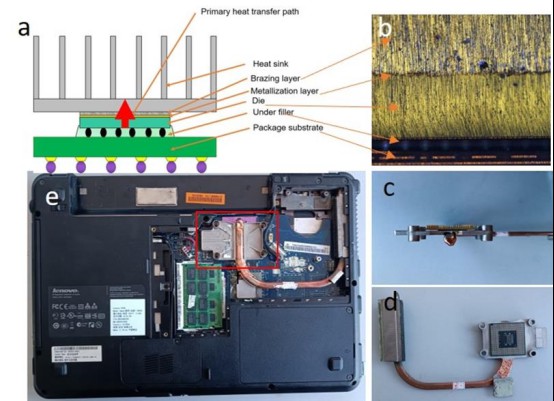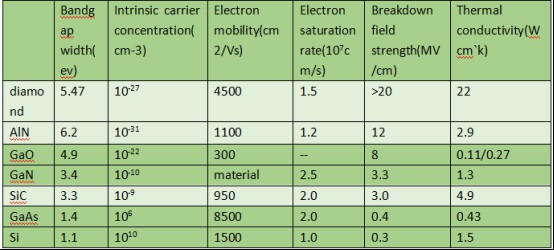With the rapid development of electronic products, the demand for CPU functions and shrinking the volume is increasing, and the IC functions used in relative products are getting stronger and stronger, the computing speed is getting faster and faster, and the volume is getting smaller and smaller, and the entire evolution trend is advancing at an alarming speed, and one of the main factors that can hinder this trend is "heat". The main factor of heat generation is the power consumption generated by the calculation of millions of transistors in the IC, although these heat can be reduced by improving the IC process capability to reduce the voltage, but still can not solve the trend of increasing heating density, taking the CPU as an example, as the transistor computing speed accelerates, the transistor density increases, and the heating wattage is increasing year by year. If the heat dissipation problem is not solved, the IC will affect the reliability of the product due to overheating, resulting in reduced life or even damage. Therefore, how to keep the CPU running at a normal temperature without damaging it is an urgent problem to be solved by the current CPU processing performance.

Figure 1 CPU heat dissipation diagram and its internal welding structure
At present, CPU processing performance mainly considers three aspects:
• Reduce thermal resistance and efficiently dissipate heat
• Low temperature metallization, welding, prevent burning of CPU
• Thermal mismatch issues
The requirements of heat dissipation materials are: high resistivity, high thermal conductivity, low dielectric constant, dielectric loss, good thermal matching with silicon and gallium arsenide, high surface flatness, good mechanical properties and easy industrial production. General heat dissipation materials include Al2O3 ceramics, SiC ceramics, and AlN materials. However, the coefficient of thermal expansion (7.2×10-6/°C) and dielectric constant (9.7) of Al2O3 are high compared with Si single crystals, and the thermal conductivity (15-35W/ (m·K)) is still not high enough, resulting in Al2O3 ceramic substrates not suitable for use in high-frequency and high-power electronic devices. The thermal conductivity of SiC ceramics is very high, and the higher the purity of SiC crystallization, the greater the thermal conductivity. The biggest disadvantage of SiC is that the dielectric constant is too high, and the dielectric strength is low, which limits its high-frequency application and is only suitable for low-density packaging heat dissipation; AlN material has excellent dielectric properties and stable chemical properties, especially its thermal expansion coefficient and silicon are more matched, so that it can be used as a promising semiconductor packaging substrate material, but the thermal conductivity is currently only up to 260W/ (m·K), with the development of CPU requirements for heat dissipation is getting higher and higher, AlN materials also have certain development bottlenecks. Diamond is currently known to have the highest thermal conductivity in nature, the thermal conductivity of diamond wafer can be as high as 2000 W/(m.K), the thermal expansion coefficient is about 1.1×10-6/°C, and it has the title of "ultimate semiconductor" in nature.

Figure 2 Comparison of diamond with other heat dissipation materials
CSMH is a high-tech enterprise focusing on the research and development and production of third-generation (wide bandgaping) semiconductor substrate materials and devices, and is committed to becoming the world's leading wide bandgap semiconductor materials and device company. We have always adhered to the concept of customer first, to provide customers with the best products and services. At present, the company has realized the large-scale production of diamond and aluminum nitride related products, the existing diamond wafer Ra<1nm, diamond hot sink thermal conductivity 1000-2000W/m.k, and GaN on diamond, diamond on GaN, diamond-based aluminum nitride and other products. Here, we provide you with the most complete and optimal diamond thermal management solutions.
 闽ICP备2021005558号-1
闽ICP备2021005558号-1Leave A Message